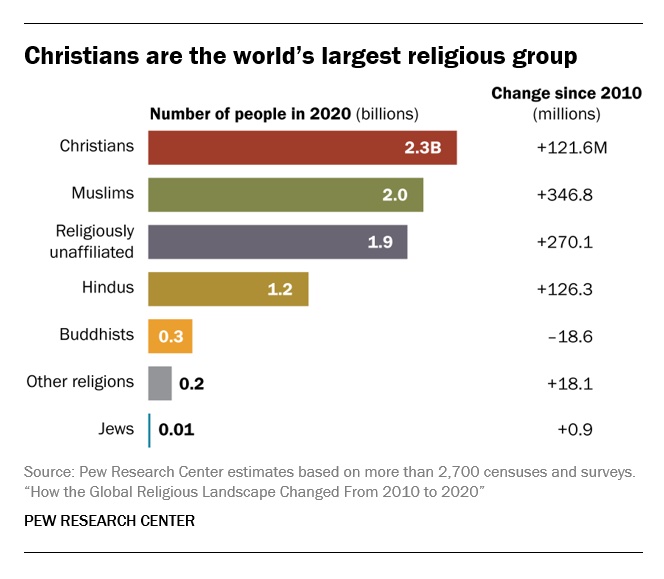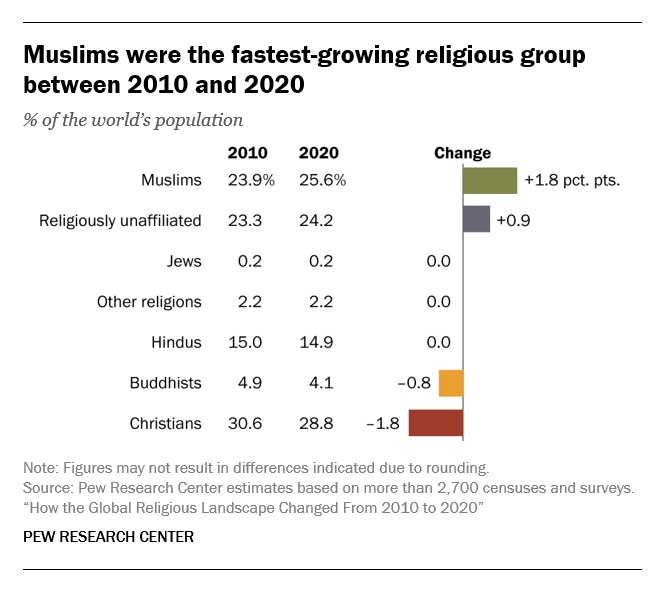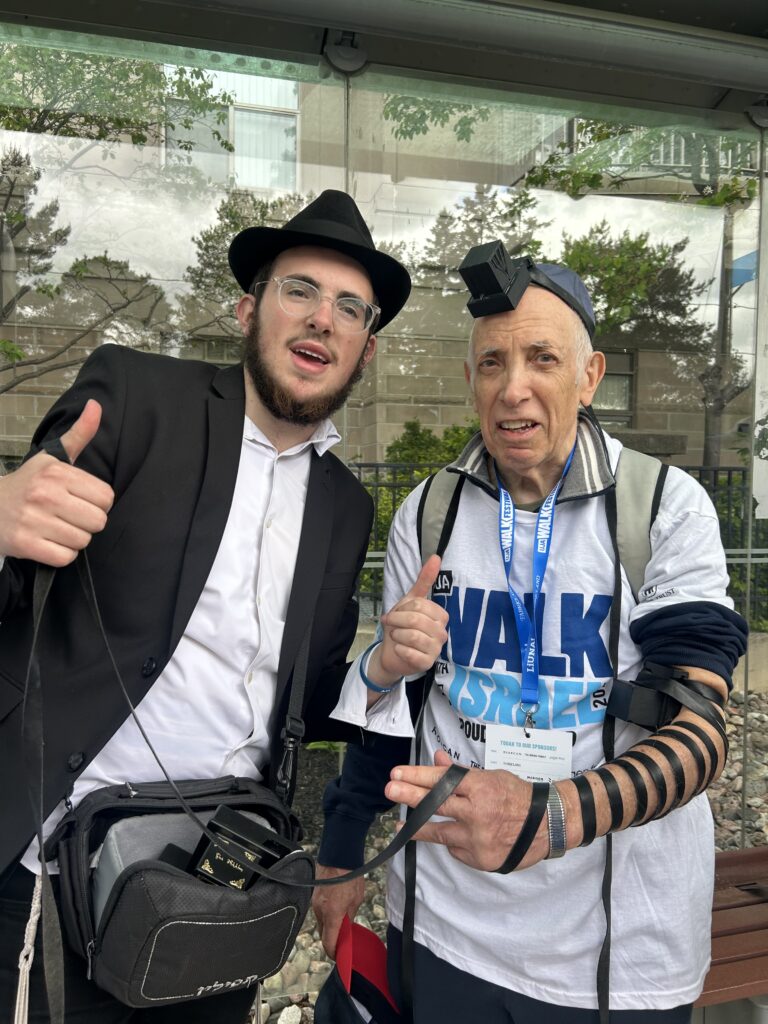Uncategorized
In an unusual alliance, Jewish media and striking journalists are uniting to cover the Pittsburgh synagogue shooting trial
PITTSBURGH (JTA) — How many times should an alleged synagogue shooter’s name be mentioned in a news story about his trial, now beginning after more than four years?
For the Pittsburgh Union Press last month, the answer was seven. For the Pittsburgh Jewish Chronicle, it was an uneasy five, in a departure from its usual answer of zero — a number chosen out of deference to a community devastated by the shooting.
The slight difference was the only discrepancy between one set of stories published by the two news organizations covering the trial of Robert Bowers, accused of murdering 11 Jews in their synagogue here in 2018.
The anomaly offers a window into an unusual partnership between the two publications — the city’s Jewish paper and the news site established by striking staffers for the Pittsburgh Post-Gazette — born in February when it became clear that the trial would last months.
Pittsburgh Jewish Chronicle editor Toby Tabachnick was dreading the trial coverage, with a staff of just three on the editorial side: herself and two reporters, David Rullo and Adam Reinherz.
“I started getting really nervous. Like, how are we going to do this?” Tabachnick said on the eve of the trial, speaking at the federal courthouse where jury selection would soon begin. “Our regular reporters could have been here. But it would have been extremely taxing, difficult and emotional for us, because we’re so ingrained in the community too.”
Plus, she added, “In addition to this trial, which is going to be every day for three months, we’re covering the synagogues, events and the holidays, the lectures, we still have a regular community newspaper to put out.”
Tabachnick knew Andrew “Goldy” Goldstein, one of the Post-Gazette’s team that picked up a Pulitzer for their coverage of the massacre, from his time as a Pittsburgh Jewish Chronicle intern. She also knew he was on strike and wondered whether he could use the extra freelance opportunity.
Instead, Goldstein immediately offered up a better idea: Join with the Pittsburgh Union Progress, the strike paper, in a joint reporting project, organized in part through the Pittsburgh Media Partnership, an incubator for local journalism. (The Jewish Telegraphic Agency is raising funds for the coverage.)
Working together just made sense, Goldstein said. The Chronicle was deeply resourced and credible in the Jewish community, and the Progress had on board Torsten Ove, a local legend.
From left to right, Bob Batz of the Pittsburgh Union Progress, Toby Tabachnick of the Pittsburgh Jewish Chronicle and Andrew Goldstein of the Progress pose in the Joseph Weis Jr. Courthouse in Pittsburgh, April 21, 2023. (Ron Kampeas)
“We have the all-star federal courts reporter in Torsten and we have a lot of really great journalists who love Pittsburgh, love this community, and we’ll do our best to cover it,” Goldstein said, noting that the Chronicle would also have access to the Progress’s photographers. “But the Chronicle brings something different entirely to the table, which is, they’re so deeply sourced in the Pittsburgh Jewish community, and they have such an interest in this trial in particular.”
Newsroom collaborations have become more frequent in recent years as publications realize they can expand their impact and audience by working together. But while there are a growing number of relationships between local and national publications and between daily and investigative outlets, ties between mainstream newsrooms and community or ethnic media are less common.
S. Mitra Kalita, the founder and director of URL Media, a network of Black and Brown community news outlets that share content and revenue, said the value in such partnerships was not just in delivering relief as media staffs shrink, but also in sensitizing mainstream media to minority sensibilities.
“Talking about who [the ethnic media outlet is] serving and why we’re doing it this way — the spirit of real collaboration is a bit of that give and take,” she said. “We make mainstream media way better because it starts to infuse mainstream media with aspects of community and thus redefine the mainstream.”
The residual trauma of the massacre in the Pittsburgh collaboration made it all the more important for the mainstream reporters to be sensitive to the nuances that the Jewish media was bringing, she said.
“Especially a story like this one, which was such an attack on a community — a community that was singled out for their sheer existence, the strategy cannot be ‘let’s just work in parallel,” Kalita said. “It’s not going to work. It has to be kind of a cross-pollination and a real collaboration.”
That’s exactly what is happening, according to the reporters and editors involved in the project, with communication easy between each publication’s editor and expertise flowing in both directions.
Ove a denizen of the Joseph F. Weis Jr. Courthouse for so long that he can tell stories about a sizable stretch of the portraits of judges that line its corridor walls; he may be the only court reporter to seek an interview with a judge after his death, to ask him why he was haunting the place. (The judge never showed, but his widow was less than surprised to hear that he was still working.)
He led a passel of Chronicle and Progress staffers through the warren-like courthouse on the Friday before the trial, handily impressing them with his intimacy with the building — he knew the provenance of the paintings in each courtroom — and its staff. Soo Song, the assistant U.S. attorney who is leading the prosecution team, smiled and nodded as she passed.
Torsten Ove, left, of the Pittsburgh Union Progress and Adam Reinherz of the PIttsburgh Jewish Chronicle confer on the first day of jury selection for the Pittsburgh synagogue massacre trial, April 24, 2023. (Toby Tabachnick)
Ove showed the reporters how to access court records for free, and while they stood around him at one of the computer terminals, the teams’ different emphases emerged: Ove predicted that jury selection, which started last week and is expected to last as long as three weeks, would not be a news generator, because in his experience, it rarely has been.
Reinherz and Tabachnick, attuned to reporting on faith communities, were not so sure: Reinherz wondered whether believing Catholics, who reject the death penalty, would be eliminated, and Tabachnick wondered whether defense attorneys would seek to keep Jews off the jury — and how they would go about doing that.
Reinherz ended up covering the first day of jury selection. “Local and national reporters decided the Pittsburgh Jewish Chronicle should have one seat during the initial session of day one,” Reinherz explained in a story that appeared on both news sites. He noted that the first member of the public to enter the courtroom was Daniel Leger, one of two survivors of the attack.
Working together across platforms was odd, said Bob Batz Jr., the Progress’s interim editor, but he could get used to it.
“This is uncharted territory for someone like me, and I’ve been doing this for a long time, and we don’t, you know, we don’t collaborate,” he said.
“We compete!” Tabachnick interjected.
“What we’re doing is not common, and it’s not going to be easy,” Batz said. “Surely, we’re going to tick each other off about something or somebody is going to put the wrong word in or there’s a million things that can go wrong, but the breaking of ground where you’re actually working together, it just makes sense in so many ways on this story. We’re really trying to serve the community.”
Tabachnick said she saw added value in keeping journalists she admired in the limelight while they are on strike. Journalists at the Pittsburgh Post-Gazette went on strike back in October over wages and working conditions, in a crescendo of mounting tensions between the paper’s longtime owners and the staff that contributed to a newsroom exodus even in 2018, when the paper won a Pulitzer for its synagogue shooting coverage. The strike is now one of the longest in journalism history, and the staffers contributing to the Pittsburgh Union Progress are doing so despite earning well below than their regular salaries.
“I feel good about getting their names, their publication’s name out,” Tabachnick said.
Each story is running in essentially identical form on both publications’ websites, with a line crediting their collaboration. Tabachnick and Batz had a brief and friendly email exchange before each clicked “publish” on their story about debate among victims’ families about the appropriateness of the death penalty.
The Chronicle is minimizing appearances of the name of the accused killer, out of sensitivity to readers who may want to see their community members centered rather than their aggressor. Some researchers and law enforcement officials have also called on journalists not to print mass shooters’ names and photographs, citing evidence that doing so may contribute to their glorification and even copycat crimes.
Batz says he totally gets the Chronicle’s thinking, despite making a different choice in his newsroom.
“We’re still feeling our way, we’re still figuring this out,” Batz said. “They don’t name the defendant in their story, and they haven’t. And our guy Torsten who’s an all-star courts reporter, he’s going to use the guy’s name. And then in real time going back and forth on email and text we came up with his solution and that story was on both websites in minutes and it was really kind of cool.”
Tabachnick picked up the account of the previous night’s collaboration as if she’d been working across a desk from Batz for decades instead of online since February.
“The solution was that I realized that with the trial starting, it really didn’t make sense not to use his name at all anymore that we really needed to as a news organization,” she said. “But that didn’t mean we had to overuse his name. And I’m not saying Torsten overused his name. He used it as much as he needed to use it in terms of style, but I took out a few of them and replaced it with ‘the defendant’ and we were all happy.”
—
The post In an unusual alliance, Jewish media and striking journalists are uniting to cover the Pittsburgh synagogue shooting trial appeared first on Jewish Telegraphic Agency.
Uncategorized
How the Global Religious Landscape Changed from 2010 to 2020

Muslims grew fastest; Christians lagged behind global population increase
• Christians are the world’s largest religious group, at 28.8% of the global population. They are a majority everywhere except the Asia-Pacific and Middle East-North Africa regions. Sub-Saharan Africa has surpassed Europe in having the largest number of Christians. But Christians are shrinking as a share of the global population, as millions of Christians “switch” out of religion to become religiously unaffiliated.

• Muslims are the world’s second-largest religious group (25.6% of the world’s population) and the fastest-growing major religion, largely due to Muslims’ relatively young age structure and high fertility rate. They make up the vast majority of the population in the Middle East-North Africa region. In all other regions, Muslims are a religious minority, including in the Asia-Pacific region (which is home to the greatest number of Muslims).

• The religiously unaffiliated population is the world’s third-largest religious category (24.2% of the global population), after Christians and Muslims. Between 2010 and 2020, religiously unaffiliated people grew more than any group except Muslims, despite their demographic disadvantages of an older age structure and relatively low fertility. The unaffiliated made up a majority of the population in 10 countries and territories in 2020, up from seven a decade earlier.
• Hindus are the fourth-largest religious category (14.9% of the world’s population), after Christians, Muslims and religiously unaffiliated people. Most (99%) live in the Asia-Pacific region; 95% of all Hindus live in India alone. Between 2010 and 2020, Hindus remained a stable share of the world’s population because their fertility resembles the global average, and surveys indicate that switching out of or into Hinduism is rare.
• Buddhists (4.1% of the world’s population) are the only group in this report whose number declined worldwide between 2010 and 2020. This was due both to religious disaffiliation among Buddhists in East Asia and to a relatively low birth rate among Buddhists, who tend to live in countries with older populations. Most of the world’s Buddhists (98%) reside in the Asia-Pacific region, the birthplace of Buddhism.
• Jews, the smallest religious group analyzed separately in this report (0.2% of the world’s population), lagged behind global population growth between 2010 and 2020 – despite having fertility rates on par with the global average – due to their older age structure. Most Jews live either in North America (primarily in the United States) or in the Middle East-North Africa region (almost exclusively in Israel).
These are among the key findings of a Pew Research Center analysis of more than 2,700 censuses and surveys, including census data releases that were delayed due to the coronavirus pandemic. This report is part of the Pew-Templeton Global Religious Futures project, which analyzes global religious change and its impact on societies around the world. Funding for the Global Religious Futures project comes from The Pew Charitable Trusts and the John Templeton Foundation.
Uncategorized
Antisemitism in some unlikely places in America

By HENRY SREBRNIK Antisemitism flourishes in a place where few might expect to confront it – medical schools and among doctors. It affects Jews, I think, more emotionally than Judeophobia in other fields.
Medicine has long been a Jewish profession with a history going back centuries. We all know the jokes about “my son – now also my daughter – the doctor.” Physicians take the Hippocratic Oath to heal the sick, regardless of their ethnicity or religion. When we are ill doctors often become the people who save us from debilitating illness and even death. So this is all the more shocking.
Yes, in earlier periods there were medical schools with quotas and hospitals who refused or limited the number of Jews they allowed to be affiliated with them. It’s why we built Jewish hospitals and practices. And of course, we all shudder at the history of Nazi doctors and euthanasia in Germany and in the concentration camps of Europe. But all this – so we thought – was a thing of a dark past. Yet now it has made a comeback, along with many other horrors we assume might never reappear.
Since the Hamas attack on Israel on October 7, 2023, there has been a resurgence of antisemitism, also noticeable in the world of healthcare. This is not just a Canadian issue. Two articles on the Jewish website Tablet, published Nov. 21, 2023, and May 18, 2025, spoke to this problem in American medicine as well, referencing a study by Ian Kingsbury and Jay P. Greene of Do No Harm, a health care advocacy group, based on data amassed by the organization Stop Antisemitism. They identified a wave of open Jew-hatred by medical professionals, medical schools, and professional associations, often driven by foreign-trained doctors importing the Jew-hatred of their native countries, suggesting “that a field entrusted with healing is becoming a licensed purveyor of hatred.”
Activists from Doctors Against Genocide, American Palestinian Women’s Association, and CODEPINK held a demonstration calling for an immediate cease-fire in Gaza at the Hart Senate Office Building in Washington, D.C., Nov. 16, 2023, almost as soon as the war began. A doctor in Tampa took to social media to post a Palestinian flag with the caption “about time!!!” The medical director of a cancer centre in Dearborn, Michigan, posted on social media: “What a beautiful morning. What a beautiful day.” Even in New York, a physician commented on Instagram that “Zionist settlers” got “a taste of their own medicine.” A Boston-based dentist was filmed ripping down posters of Israeli victims and a professor at the University of Pennsylvania Perelman School of Medicine did the same. Almost three-quarters of American medical associations felt the need to speak out on the war in Ukraine but almost three-quarters had nothing to say about the war in Israel.
Antisemitism in academic medical centres is fostering noxious environments which deprive Jewish healthcare professionals of their civil right to work in spaces free from discrimination and hate, according to a study by the Data & Analytics Department of StandWithUs, an international, non-partisan education organization that supports Israel and fights antisemitism.
“Academia today is increasingly cultivating an environment which is hostile to Jews, as well as members of other religious and ethnic groups,” StandWithUs director of data and analytics, and study co-author, Alexandra Fishman, said on May 5 in a press release. “Academic institutions should be upholding the integrity of scholarship, prioritizing civil discourse, rather than allowing bias or personal agendas to guide academic culture.”
The study, “Antisemitism in American Healthcare: The Role of Workplace Environment,” included survey data showing that 62.8 per cent of Jewish healthcare professionals employed by campus-based medical centres reported experiencing antisemitism, a far higher rate than those working in private practice and community hospitals. Fueling the rise in hate, it added, were repeated failures of DEI (diversity, equity, and inclusion) initiatives to educate workers about antisemitism, increasing, the report said, the likelihood of antisemitic activity.
“When administrators and colleagues understand what antisemitism looks like, it clearly correlates with less antisemitism in the workplace,” co-author and Yeshiva University professor Dr. Charles Auerbach reported. “Recognition is a powerful tool — institutions that foster awareness create safer, more inclusive environments for everyone.”
Last December, the Data & Analytics Department also published a study which found that nearly 40 per cent of Jewish American health-care professionals have encountered antisemitism in the workplace, either as witnesses or victims. The study included a survey of 645 Jewish health workers, a substantial number of whom said they were subject to “social and professional isolation.” The problem left more than one quarter of the survey cohort, 26.4 per cent, “feeling unsafe or threatened.”
The official journal of the Alliance for Academic Internal Medicine concurs. According to “The Moral Imperative of Countering Antisemitism in US Medicine – A Way Forward,” by Hedy S. Wald and Steven Roth, published in the October 2024 issue of the American Journal of Medicine, increased antisemitism in the United States has created a hostile learning and practice environment in medical settings. This includes instances of antisemitic behaviour and the use of antisemitic symbols at medical school commencements.
Examples of its impact upon medicine include medical students’ social media postings claiming that Jews wield disproportionate power, antisemitic slogans at the University of California, Los Angeles (UCLA) David Geffen School of Medicine, antisemitic graffiti at the University of California, San Francisco (UCSF) Cancer Centre, Jewish medical students’ exposure to demonization of Israel diatribes and rationalizing terrorism; and faculty, including a professor of medicine at UCSF, posting antisemitic tropes and derogatory comments about Jewish health care professionals. Jewish medical students’ fears of retribution, should they speak out, have been reported. “Our recent unpublished survey of Jewish physicians and trainees demonstrated a twofold increase from 40% to 88% for those who experienced antisemitism prior to vs after October 7,” they stated.
In some schools, Jewish faculty are speaking out. In February, the Jewish Faculty Resilience Group at UCLA accused the institution in an open letter of “ignoring” antisemitism at the School of Medicine, charging that its indifference to the matter “continues to encourage more antisemitism.” It added that discrimination at the medical school has caused demonstrable harm to Jewish students and faculty. Student clubs, it said, are denied recognition for arbitrary reasons; Jewish faculty whose ethnic backgrounds were previously unknown are purged from the payrolls upon being identified as Jews; and anyone who refuses to participate in anti-Zionist events is “intimidated” and pressured.
Given these findings, many American physicians are worried not only as Jewish doctors and professionals, but for Jewish patients who are more than ever concerned with whom they’re meeting. Can we really conceive of a future where you’re not sure if “the doctor will hate you now?”
Henry Srebrnik is a professor of political science at the University of Prince Edward Island.
Uncategorized
The 2025 Toronto Walk (and talk ) for Israel

By GERRY POSNER There are walks and then there are walks. The Toronto UJA Walk for Israel on May 25, 2025 was one of a kind, at least as far as Canada and Jews are concerned. The number of people present was estimated to be 56,000 people or 112,000 total shoes. (How they get to that number is bewildering to me, since there is no one counting). This was 6,000 more than last year. Whether it is true or not, take it from me, it was packed. The synagogues in Canada should be so fortunate to get those numbers in total on High Holidays. The picture here gives you a sense of the size of the crowd.

This was my first walk in Toronto for Israel and I was with my granddaughter, Samantha Pyzer (not to forget her two friends whom she managed to meet at the site, no small feat, even with iPhones as aids). The official proceedings began at 9:00 a.m. and the walk at 10:00 a.m. There was entertainment to begin with, also along the way, and at the finish as well. The finish line this year was the Prosserman Centre or the JCC as it often called. The walk itself was perhaps 4 kilometres – not very long, but the walking was slow, especially at the beginning. There were lots of strollers, even baby carriages, though I did not see any wheelchairs. All ages participated on this walk. I figured, based on what I could see on the faces of people all around me that, although I was not the oldest one on the walk, I bet I made the top 100 – more likely the top 20.
What was a highlight for me was the number of Winnipeggers I met, both past and present. Connecting with them seemed to be much like a fluke. No doubt, I missed la lot of them, but I saw, in no particular order (I could not recall the order if my life depended on it): Alta Sigesmund, (who was, a long time ago, my daughter Amira’s teacher), Marni Samphir, Karla Berbrayer and her husband Dr. Allan Kraut and family. Then, when Samantha and I made it to the end and sat down to eat, I struck up a conversation with a woman unknown to me and as we chatted, she confirmed her former Winnipeg status as a sister-in- law to David Devere, as in Betty Shwemer, the sister of Cecile Devere. I also chanced upon Terri Cherniack, only because I paused for a moment and she spotted me. As we closed in near the finish, I met ( hey were on their way back), Earl and Suzanne Golden and son Matthew, as well as Daniel Glazerman. That stop caused me to lose my granddaughter and her pals. Try finding them amid the noise and size of the crowd – but I pulled it off.

As I was in line to get food, I started chatting with a guy in the vicinity of my age. I dropped the Winnipeg link and the floodgates opened with “ Did I know Jack and Joanie Rusen?” So that was an interesting few minutes. And I was not too terribly surprised to come across some of my Pickleball family. All of these meetings, along with spotting some of my sister’s family and other cousins, were carried on with the sound of the shofar as we moved along the way. In short, this was a happening. Merchants selling a variety of products, many of them Israeli based, were in evidence and, of course, the day could not have ended without the laying of tefillin, aided by Chabad, who have perfected the procedure to take less than a minute. See the photo. Chabad had a willing audience.
Aside from the joy of sharing this experience with my granddaughter, the very presence of all these Jews gathered together for a common reason made this day very special to me. However, there was a downside to the day. The downside was that, as we began to walk back to our car there was no other way I could figure out how to return when the rains came and came. While we walked faster, we were impeded by pouring rain and puddles. But Samantha wanted to persevere, as did I. We made it, but were drenched. My runners are still drying out as I write this two days later.
What with being surrounded by 56,000 people, the noise, the slow walking, and the rain, I can still say the day was a real highlight for me – one of the better moments since our arrival in Toronto in 2012. As well as the photos we took along the way, I have the reminder of the day, courtesy of the UJA, as evidenced from the photo. It was not just the walk, but the talk that accompanied the walk that made it so worthwhile for me. I would do it again, minus the rain.
